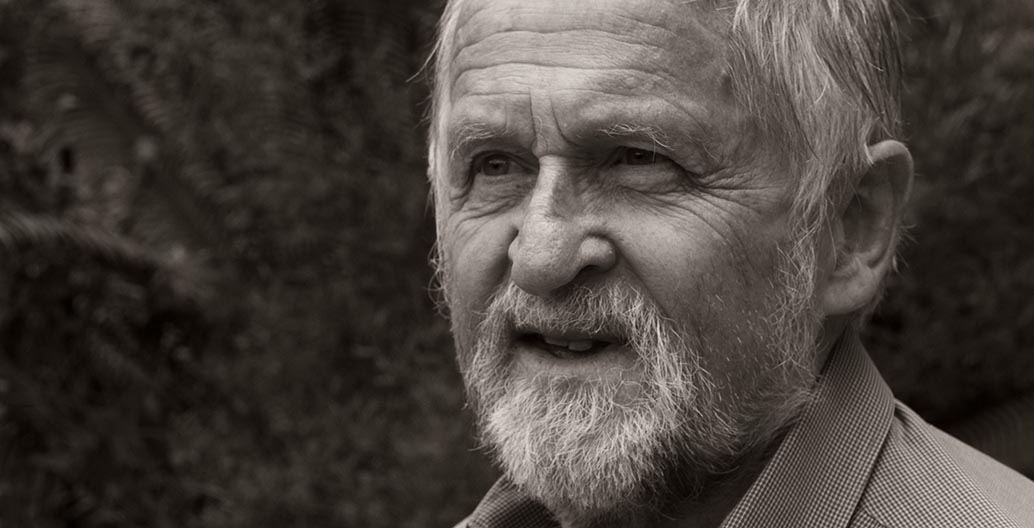
Nurturing the land: Paul Thompson
A life-long passion for plants and their environments guided Paul Thompson from an early life on the stage toward a career spent showcasing Australia’s unique and undervalued flora through landscape design.
Foreground: Can you tell us a little about your early life? How did it influence your career?
Paul Thompson: I was born in Melbourne, in Fairfield, near the Yarra River. From a very early age I’d get on my bike and go for a ride after lunch. I’d come back late in the day without worrying anybody, having ridden around Yarra Bend or up the river or down the river, or following other trails and creek lines, or getting on the train and going out to Eltham, which I did.
Foreground: By yourself?
Paul Thompson: Yes, by myself. There was my brother and my sister but I would go by myself. And so I had that connection with bushland from an early age. It was self-administered really. And it was an aesthetic thing. If I wagged school, I’d go to the river. I was always interested in plants and those environments were a major influence.
I left school at 14 and went to tread the boards at the Princess Theatre – so it’s quite significant to me to be doing a garden for the Parliament of Victoria on the other side of the road! I did various shows in Melbourne and then, when I must have been 15, I worked for a short time for Melbourne City Council in Fitzroy Gardens as well as working at night in a music hall show.
In 1961 I got a job in a musical called Bye Bye Birdie. I played a good role in that and we travelled to Adelaide, Perth, Brisbane and Sydney. So I’d go to all the gardens. I went to Kings Park many times as I lived for a month in Perth within walking distance. In Brisbane – which was really a town then – I lived within walking distance of the botanic gardens. In Sydney, I went to Centennial Park to ride horses, and often to the botanic gardens, and to other famous gardens including those at Dee Why. That was where the sisters Betty Maloney and Jean Walker – who wrote and illustrated those marvellous bush garden books – were active in developing Stoney Range Flora Reserve, which was very influential.
Foreground: Were you thinking at the time that this self-education was leading to something you wanted to do as a career?
Paul Thompson: No, not really. I was just engaged with what I was doing. And I was having a lot of fun!
Foreground: So how did you move on from that good time?
Paul Thompson: Well, when I was 21 was the last time I was on the stage. I had worked with some great people – 10 weeks in New Zealand in a play with Googie Withers – and, you know, I was looking at the landscape all the time. You’re formulating these ideas about what’s going on and why. You’re formulating questions, not really knowing the answers, but it’s always intriguing. The last show I did was with June Bronhill, called Robert and Elizabeth. It was a big musical for June in Britain and she came back to Australia with it. I stayed in Sydney after that for a while and did three musicals in a circus tent. And then I decided that, really, I was too ordinary. I was never star material. I decided I would try and get out and make my way in the world as something else.
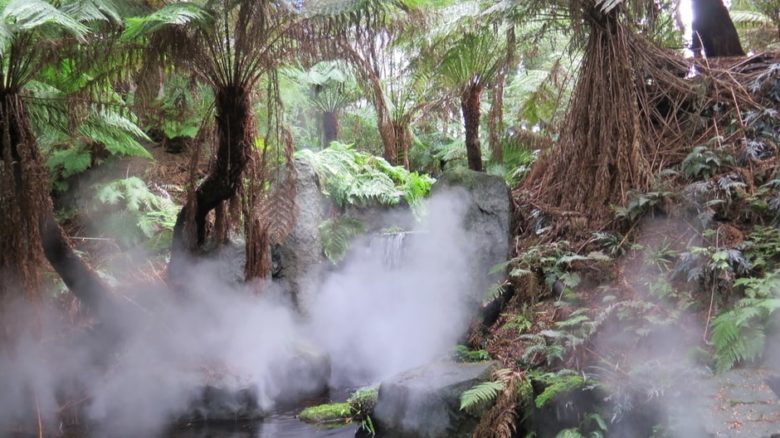
An early project with TCL: The internalised Forest Gallery of living plants at the Melbourne Museum.
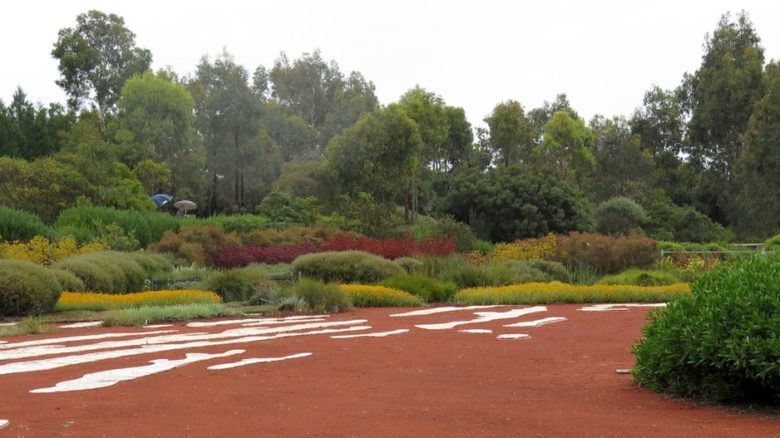
Some of Paul Thompson's rich planting for the Australian Garden at the Cranbourne annex of the Royal Botanic Gardens, Melbourne. With TCL.
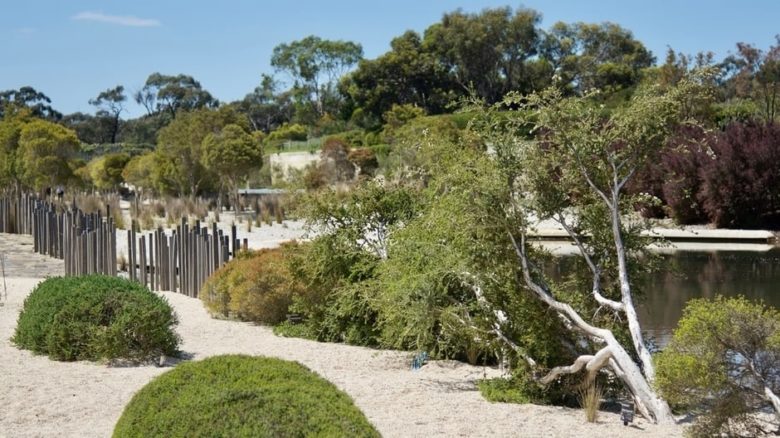
The Seaside Garden at the Royal Botanic Gardens, Cranbourne features newer planting that has been pruned and maintained as instructed by Paul Thompson. With TCL.
I ended up getting a job with the Department of Agriculture, after some training, as a plant quarantine officer, which was interesting but it wasn’t going to go anywhere. I wanted to do landscape architecture at RMIT, where it was first offered under Ron Rayment, but I had to have higher qualifications. I tried to do night school but with no support, that was hopeless. Eventually it worked out. The story went like this: I was friends with a number of architects in my social group and I was advising on a garden in Drummond Street, Carlton, for a terrace house. They said to me ‘You ought to be a landscape gardener,’ and I said, ‘A what?’
Foreground: So you knew what a landscape architect was but not a landscape gardener?
Paul Thompson: Yes! Even though I’d been advising on a few gardens because I was a plant nut, I didn’t hear about landscape gardeners until that January, exactly fifty years ago! I said, that sounds like a good idea. So I went out and bought a brand new Volkswagon kombi van from Pound Motors and then in August that year I started my business. And I’ve been doing it ever since.
Foreground:: Early on you were designing as well as building?
Paul Thompson: What is interesting about that is the type of gardens I did. My first parkland was nine hectares in the City of Nunawading. I’d say it was the first public garden in Melbourne designed to house the flora specifically of the area. It’s called Yarran Dheran. If you know about the history of Melbourne, you might know that the local conservation movement started in the 1950s. It was based in three places: Nunawading, with the Blackburn Tree Preservation Society, Sandringham and Eltham – well, Eltham and Ivanhoe. Yarran Dheran means Wattle Gully. The idea started out that it would be a place to display wattles. We thought there was five hundred or so species back then but we now know there’s 11 or 12 hundred. I had a copy Audas’s Flora of Mitchum – he was director of the botanic gardens and herbarium here in the thirties. That book included Croydon, which had a very rich flora, particularly its orchids. So I was interested in local flora and sharing and expanding appreciation of that. It was a mix of conservation, revegetation and new works.
At the same time I was doing a project for Rusden State College – that was a design and construct job – with Montgomery King, those very fine post-war modernist architects. I did other work with them and various significant projects including consultation with state government. I had read books by Brenda Colvin and Sylvia Crowe. Sylvia in particular was responsible for a lot of English New Towns and talked about local identity, visual identity and linear parkways and freeways. I thought these were all terrific things and I still do. I’ve been working with Rush Wright Associates on Frankston train line for years. The government brief had nothing in it about being a wildlife corridor, which is such a lost opportunity, so we are doing our best to get this in. But see how such things are forgotten?
Foreground: At what point were you working with landscape architects?
Paul Thompson: Well, I didn’t! I was doing that work, the work of landscape architects, but I was doing my own thing. It was noticed by people such as Ralph Neale when he started the magazine Landscape Australia. I was in the second or third issue with a big garden I’d done called “Eleven acres of bush” – a terrific project out at Upper Beaconsfield for Noel and Muriel Reid with architect David Chancellor who was very supportive.
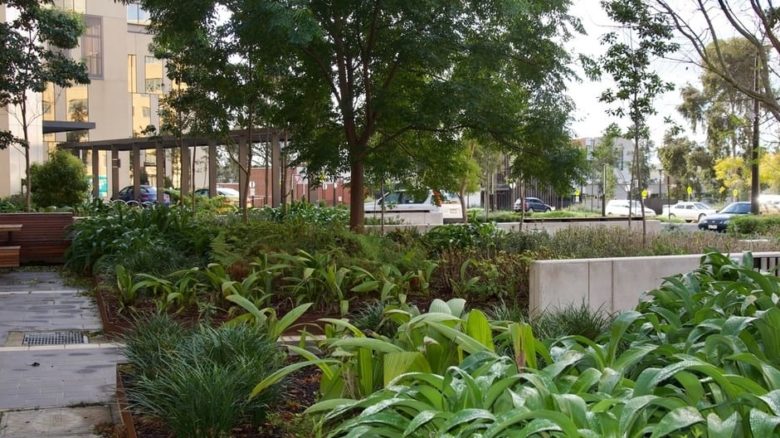
Thompson's lush and careful planting at Bendigo Hospital is designed to controbute to patient wellbeing and recovery. With Oculus Landscape Architects.
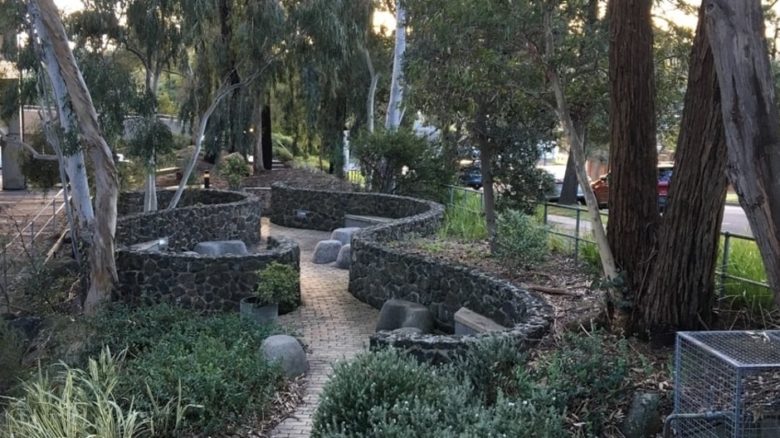
An early Paul Thompson design and construction project, now the University of Melbourne Hawthorn campus, at forty years old.
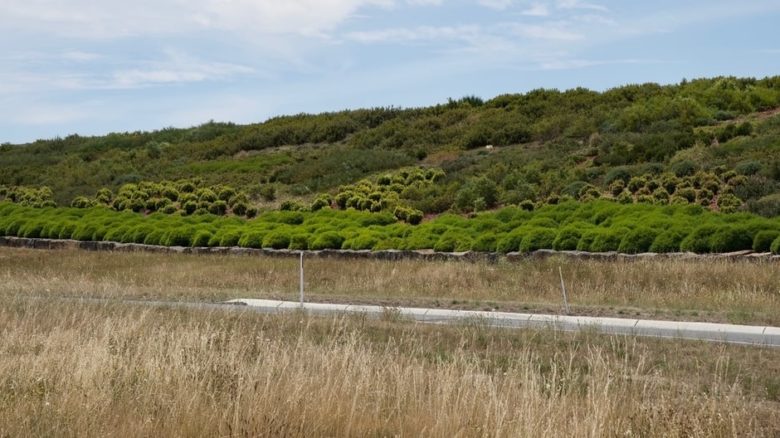
Thompson's native planting for Memorial Drive offers creates valuable linear green corridors for wildlife habitat. With Oculus and VicRoads.
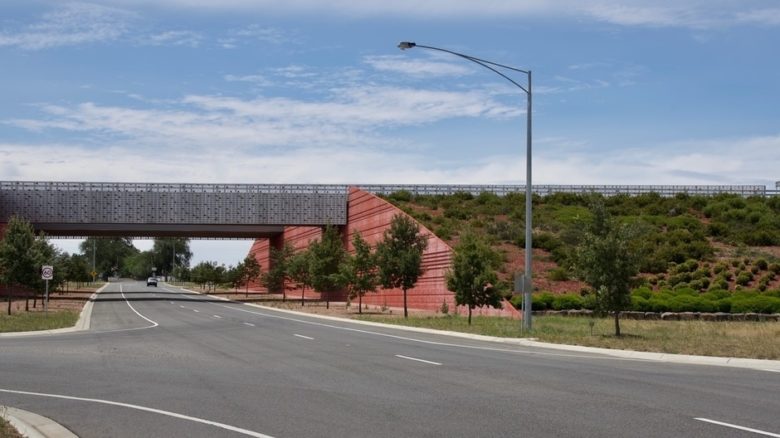
An admirer of the pioneering work of Sylvia Crowe, Thompson has striven to improve infrastructure and freeway planting. Memorial Drive project with Oculus and VicRoads.
I worked on the Patterson Lakes project, in the early days after the first stage had been constructed, also helping coordinate where buildings would go. There were tight controls because all trees on that project were covenanted early on. Nothing like that ever happened again, because it wasn’t economic for private development. At that same time I worked with Darryl Jackson for The State Bank staff college, just as the partnership – Jackson and Walker – broke up. I’m very proud too of Hawthorn State College, which I did in 1976 and nothing much has happened to it since. And that’s a good thing! Although it could do with some refurbishment. I think it’s one of the most significant things that I did because of the site. Then I was doing a lot of stuff with the army out at Puckapunyal and Queenscliff and Bandiana in the eighties.
Foreground: At what point was there wide acknowledgement by landscape architects of your work?
Paul Thompson: Well, my work was well known because Landscape Australia featured various projects. My membership of the Institute came about when James Weirick got me involved at RMIT on the curriculum advisory panel. I spoke at the first Edge conference. Now that was run by students, so they thought I had something to say. It was great fun. I was totally stimulated by that conference. So I was involved with RMIT then, giving some guest lectures, and because I put myself out there and I volunteered I met Kevin Taylor. He knew what I was doing. Kate Cullity knew me too but we didn’t meet until we were both on the curriculum advisory panel. Together at one of the meetings Kevin said, there’s a botanic garden competition coming up, and I said: I wanted to talk to you about that. I knew that it was happening because of my friendship with horticulturalist Roger Elliot. So we agreed to be part of a team. Kate, Kevin and I put a submission in with some assistants. We did presentations and were finally successful in winning the commission to design the Royal Botanic Gardens Cranbourne annex. Immediately Kevin had organised for Perry Lethlean to come on board, which he did. It was the founding of TCL.
What I find so interesting is that if I’d taken an attitude that I’m not being paid for this so why in hell would I do it – if I’d been a bit churlish and, you know, it was hard to make a living – that project and partnership would never have happened. But I thought it would be interesting and it certainly was! Around that time, the then-president of AILA Victoria wrote to the Institute putting me forward for membership. That was knocked back. Others wrote some letters but nothing came of those efforts. I don’t know who put me forward successfully in the end. It was Perry who put me forward for a fellowship, for which I’m very grateful.
Foreground: Clearly having you within the Institute is wonderful for the organisation, but there would have been others also doing the work of landscape architects without formal training at that time?
Paul Thompson: Yes, Bruce Mackenzie had no training. Or rather, he had training in graphic art. And there are others. I began working in the field a few years after the start of the Institute in 1967. But I knew a lot of the people working at that time: Grace Fraser – Grace by name and grace by nature! – Beryl Mann and Glen Wilson, who was a founding member of the Institute and enthusiastic early promoter of native gardens.
Foreground: With such a long perspective on the many efforts of those concerned for good design of our landscapes, what thoughts do you have about the future of landscape architecture?
Paul Thompson: Here’s the thing, I didn’t really understand the nature and significance of the land to Indigenous Australians until I went to the Kimberley last year. I’d never really absorbed it. I bought a load of books and read them, met with some people, talked to people up there and started to grasp it. I’d dealt with the aboriginal garden at Monash University, and another couple of small gardens. But this is bigger. I think their attitude – that the land is part of them and they are part of the land – is something that we must take on. That’s the message for us. And I don’t think we’ve got that. I think landscape architecture can still see vegetation as decoration, not as nurturing of the land.
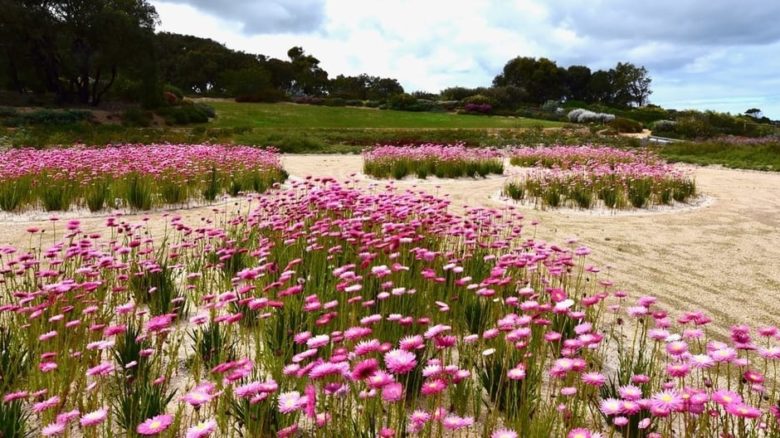
Sculptural patterning of native wildflowers at the Red Rocks Garden, near Anglesea in Victoria.
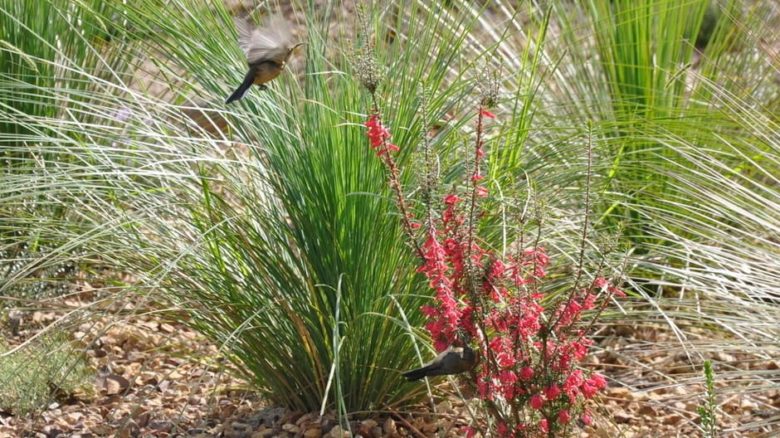
Fauna enjoying the rich native planting at Red Rocks Garden.
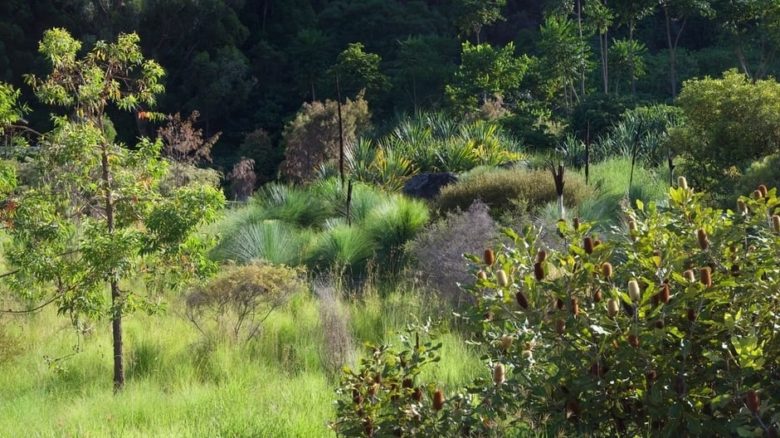
Rich textured greens are the feature of Thompson's planting design for the nine-year-old Mullumbimby Garden in northern New South Wales.
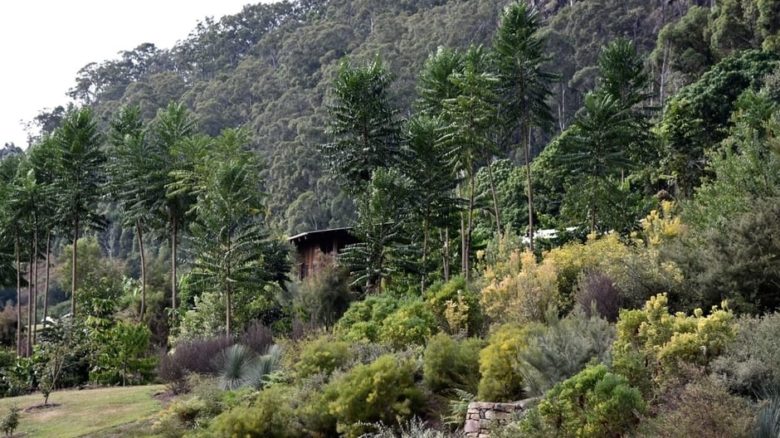
Spatial sequence with layered planting at Mullumbimby Garden in the Northern Rivers region of New South Wales.
Our work should be about manifesting the intangible – there’s a line! And the intangible is reinforcing people’s connection with the land. And unless you embrace natural processes and understand them too, you can’t do that. When I started doing this work there was hardly an ecologist named in the Yellow Pages. Now there are lots of them. I don’t think landscape architects have to be ecologists, but they need to understand what ecologists do so they can employ them in a very well-planned and fundamental way.
The importance of this is most manifest in local government, because local government is in charge of more land than anyone except the military, I think, and national parks. I believe in landscape architecture being in control of an important body of knowledge, which is gradually happening. But landscape includes all these fragmented interests. There’s the rise of the arborist, for example. They didn’t exist fifty years ago as such. They’ve got power because they have clear, specific control of a major asset. What arborists do within the landscape though, is gradually becoming more a matter for landscape architects to determine, because it’s all about design thinking and the quality of design outcomes.
You have all these interest groups in local government, and they don’t talk to each other or have control, so who looks after this and makes it work? Not the CEO. They have enough to do. There needs to be somebody at the top bringing it all together so we all go on a collective adventure – such as the design director at the City of Melbourne. But it would be better for it to be a landscape architect, someone who knows something about plants and ecology, as well as place. They need to protect and advocate for good landscape outcomes.
I did a redesign of the Ellis Stones garden at the University of Melbourne but it is difficult to maintain such early native gardens properly. I wonder what I should do to advocate for more awareness and care for native planting – go on a soap-box? No, I’m not good at that. But it shows that we don’t value our cultural assets enough. I’m not talking about protecting what I’ve done. Working with Professor Gini Lee and Associate Professor Andrew Saniga, we did the best we could to perpetuate the essence of what was important about a garden by someone significant to landscape design. Whether you like the garden or not doesn’t matter – it’s significant. We should realise how much we are enriched by our landscapes. We’re making the world better for ordinary people. That was what Olmsted aimed to do. That’s what landscape architects do, whether they quite know that or not.
–
Thompson is also author of Australian Planting Design, which he describes as one of the most challenging tasks he has undertaken. The second edition is available from the CSIRO.


